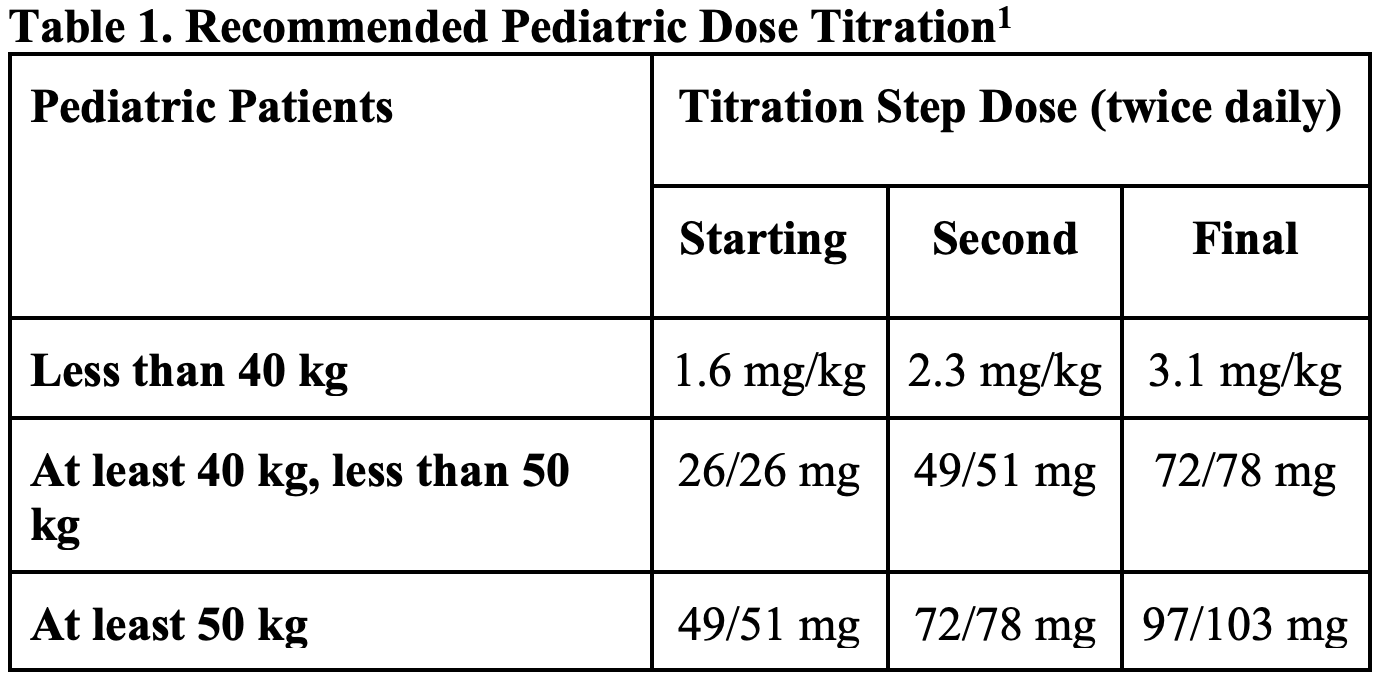Article
Clinical Overview: Sacubitril/Valsartan (Entresto) for Chronic Heart Failure
Author(s):
Sacubitril/valsartan (Entresto)reduces the risk of hospitalization and death related to cardiovascular complications in patients with heart failure.
The combination medication sacubitril and valsartan (Entresto) is indicated for use in adult patients with chronic heart failure (HF) to reduce the risk of hospitalization and death related to cardiovascular complications. In pediatric patients 1 year of age or older, sacubitril/valsartan treats symptomatic HF with systolic left ventricular systolic dysfunction.1
In both populations, sacubitril/valsartan reduces negative cardiovascular outcomes. The FDA approved it for use in 2015.
Mechanism of Action
Sacubitril/valsartan is an angiotensin receptor neprilysin inhibitor (ARNI). Sacubitril prevents breakdown of natriuretic peptides by blocking neprilysin.2 Valsartan is an angiotensin receptor blocker (ARB), halting the function of the renin-angiotensin-aldosterone-system.
Neprilysin breaks down angiotensin II, which is why sacubitril is formulated with an ARB to block the buildup of excess angiotensin II.
Clinical Trials
The PARADIGM-HF trial reported that sacubitril/valsartan significantly reduced mortality and hospitalization in HF patients with a reduced ejection fraction.3 Sacubitril/valsartan therapy reduced cardiovascular hospitalization rates and mortality by 20% and prolonged survival by approximately 1-2 years in patients who had HF with reduced ejection fraction compared with enalapril.4
Upon the study’s publication, the American College of Cardiology, American Heart Association, and the Heart Failure Association of America updated their guidelines. Sacubitril/valsartan further reduces morbidity and mortality in patients with the above indications.
Several ongoing trials are investigating sacubitril/valsartan in other cardiovascular and non-cardiovascular conditions. The trials are examining sacubitril/valsartan’s efficacy in advanced HF, arrhythmias, chronic kidney disease, diabetes mellitus, end-stage renal disease, and hypertension.
One study that is examining the effects on chemotherapy-induced left ventricular dysfunction will have results in September 2025.5
Dosage and Administration
Sacubitril/valsartan is available in 3 different strength combinations: sacubitril 24 mg/valsartan 26 mg, sacubitril 49 mg/valsartan 51 mg, and sacubitril 97 mg/valsartan 103 mg.1
The starting dose for patients on low dose angiotensin-converting enzyme (ACE) inhibitors (ACEIs) or ARBs or not previously on ACEI or ARB is sacubitril 24 mg/valsartan 26 mg twice daily. Patients should discontinue their previous ACE inhibitor or ARB when transitioning to this drug.
For patients on moderate- to high-dose ACEIs or ARBs, the starting dose is sacubitril 49 mg/valsartan 51 mg twice daily. In both instances, patients should double their dose every 2-4 weeks as tolerated, with a maximum dose of sacubitril 97 mg/valsartan 103 mg twice daily.
For patients with moderate hepatic impairment or an eGFR less than 30 mL/minute, the starting dose should be sacubitril 24 mg/valsartan 26 mg twice daily. Patients with severe hepatic impairment should not take sacubitril/valsartan.
Pediatric Dosing
Refer to Table 1 for full pediatric dosing information. Pharmacists should provide oral suspensions to pediatric patients less than 40 kg or those unable to swallow tablets. Sacubitril/valsartan oral suspension 800 mg/200 mL (1.96/2.06 mg/mL) can be prepared using eight tablets of 49/51 mg tablets. See the package insert for full preparation instructions.

Adverse Events
Adverse reactions to sacubitril/valsartan include cough, dizziness, hyperkalemia, hypotension, and renal failure.
Warnings and Contraindications
Patients with hypersensitivity to any ingredients of sacubitril/valsartan should not use this drug. Pharmacists should counsel patients to not use sacubitril/valsartan concomitantly with ACE inhibitors or history of angioedema related to previous ARB or ACE inhibitor use.
If switching from an ACE inhibitor to sacubitril/valsartan, patients must allow 36 hours before starting sacubitril/valsartan. In patients with diabetes, concomitant use of aliskiren is contraindicated.
At each visit, pharmacists should observe patients for signs and symptoms of angioedema and hypotension. In susceptible patients, providers should monitor renal function and potassium levels while on this medication.
Pregnancy and Lactation
Sacubitril/valsartan can cause fetal harm when administered to pregnant women.1 Pregnant patients must discontinue sacubitril/valsartan as soon as possible.
Use of this medication, especially in the second and third trimesters of pregnancy, will affect the fetal renal function which can lead to renal failure, skeletal deformations, and/or death. However, if the medication is lifesaving for the mother, advise the patient of the potential risk to the fetus.
Pharmacists should counsel patients to not breastfeed during treatment with sacubitril/valsartan due to the potential presence in breast milk.
About the Author
Greta Staubly is a 2024 PharmD candidate at the University of Connecticut.
References
- Novartis. (2021, February). Highlights of Prescribing Information: Entresto. Novartis United States of America. Retrieved April 29, 2022, from https://www.novartis.us/
- Diala, N., Kerndt, C. C., & Reed, M. (2021, July 26). Sacubitril/Valsartan. National Library of Medicine. Retrieved April 30, 2022, from https://www.ncbi.nlm.nih.gov/books/NBK507904/
- Mann, D. L., Greene, S. J., Givertz, M. M., et. al. (2020). SACUBITRIL/Valsartan in advanced heart failure with reduced ejection fraction. JACC: Heart Failure, 8(10), 789–799. https://doi.org/10.1016/j.jchf.2020.05.005
- Hubers, S. A., & Brown, N. J. (2016). Combined angiotensin receptor antagonism and NEPRILYSIN inhibition. Circulation, 133(11), 1115–1124. https://doi.org/10.1161/circulationaha.115.018622
- Badreldin, H.A.; Aldosari, N.; Alnashwan, L.; Almutairi, T.; Yousif, N.; Alsulaiman, K.; Aljuhani, O.; Hafiz, A.; Alshaya, O. What the near Future Holds for Sacubitril/ Valsartan: A Summary of Major Ongoing Studies. J. Cardiovasc. Dev. Dis.2022,9,54. https://doi.org/ 10.3390/jcdd9020054






